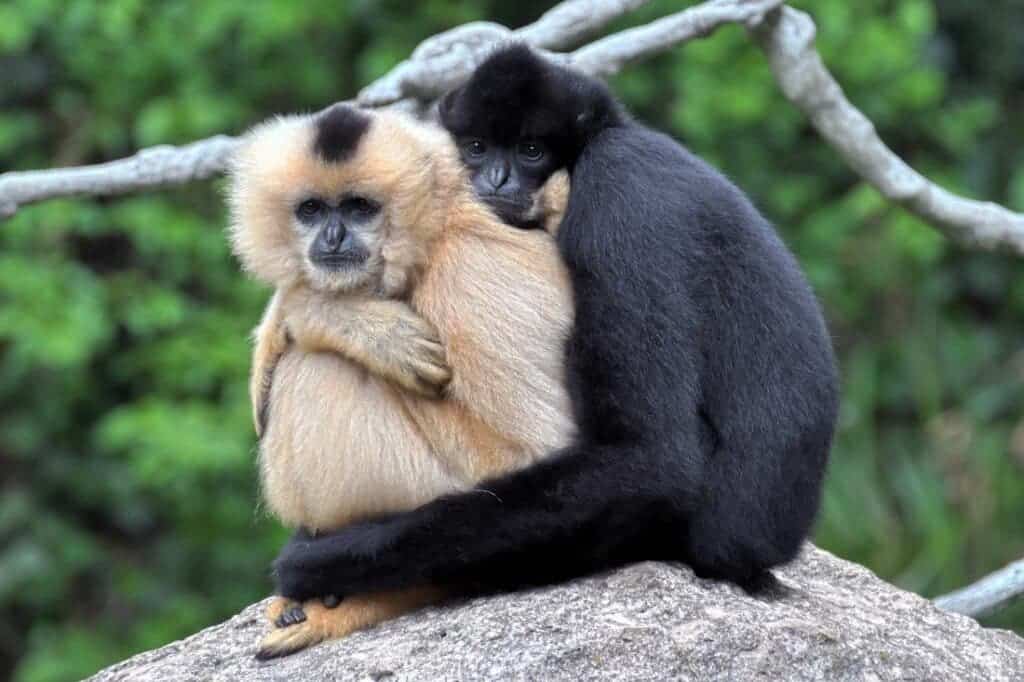The Hainan gibbon (Nomascus hainanus) is considered the world’s rarest primate. There used to be about 2,000 individuals in 1950 living in Hainan, an island near China. But 20 years later poaching and habitat loss left only seven to nine individuals in the area.

Nevertheless, there are some signs to be hopeful. Conservation efforts have helped the critically endangered primate make a gradual comeback. There are now more than 30 gibbons living on the island and a male and a female have just started a new family so the population could keep on growing.
The entire Hainan gibbon population used to be isolated to an area of 1,600 hectares of forest in the Hainan Bawangling National Nature Reserve. But last year villagers reported seeing a male and female gibbon outside their typical range. Rangers heard them perform a duet, which means their relationship was established.
“Even though the numbers are still small, you can see a future for this animal,” said in a statement senior conservation officer Philip Lo Yik-fui of Hong Kong-based Kadoorie Conservation. “They are really intelligent animals. When they look at you, it feels like they are trying to communicate,”
The conservation project for the gibbon began in 2003, when there were only 13 individuals living in two family groups at the natural reserve. But despite the reserve protected the gibbons it wasn’t ideal for them as figs and lychee, their favorite food, didn’t grow there.
The Kadoorie Conservation NGO started monitoring the population of gibbons to prevent poaching and learn more about them. They also planted more than 80,000 native fruit trees to help expand their habitat.
The efforts paid off, with numbers on the rise of Hainan gibbons.
The gibbons are now reproducing at a stable pace, said Lo. The goal is to raise their population to more than 50, which will enable a transition from being “critically endangered” to “endangered”, according to the parameters established by the International Union for Conservation of Nature’s (IUCN).
Helen Chatterjee, a member of the gibbon specialist group in the IUCN, told South China Morning Post that she celebrated the progress but said the genetic health of the Hainan gibbons remained a concern. There’s still a low birth rate and that poses a risk, she added.
With only 30 gibbons remaining, genetic diversity is also a concern. A study showed genetic diversity in Hainan gibbons has been gradually declining since the 19th century, now 30% lower from its previous levels. Species can have poor health and fertility problems when there’s low genetic diversity.
Hainan has also been affected by climate change in recent years, and this also poses a threat to the gibbons. Back in 2014, a typhoon hit the island, causing landslides in the same area where the gibbons live. The team at The Kadoorie Conservation NGO installed back then ropes for the animals to use.
While local authorities weren’t initially involved in the conservation efforts, Kadoorie is now working with them. Back in 2019, the Forestry Department of Hainan province announced it would set up the Hainan Tropical Rainforest National Park. The NGO is also working with local former hunters to help monitor the gibbons.
“We try and instill a sense of pride in the locals, and the ex-hunters are really satisfied with their work now,” Lo said. “That is the main point of conservation work, it’s just as much about the people. And now people who were on opposing sides are teammates working together to protect the gibbons.”


